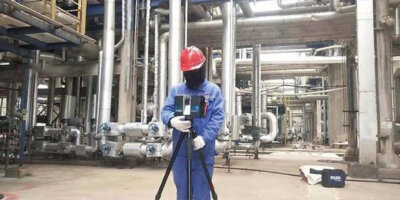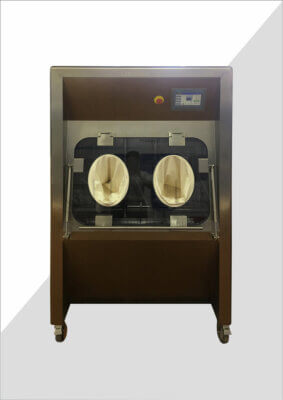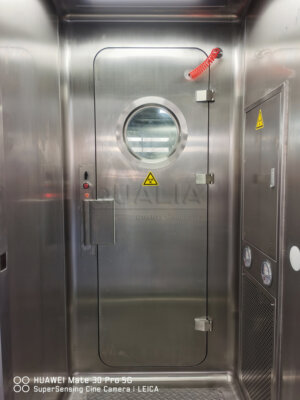Effluent decontamination is a critical process in various industries, from pharmaceutical manufacturing to biotechnology research facilities. As environmental regulations become increasingly stringent and the need for efficient waste management grows, choosing the right processing method for effluent decontamination has never been more important. This article delves into the comparison between continuous and batch processing in effluent decontamination systems, exploring their benefits, challenges, and optimal applications.
The debate between continuous and batch processing in effluent decontamination systems has been ongoing for years. Each method offers unique advantages and faces distinct challenges, making the choice between them crucial for effective waste management. Factors such as effluent volume, presence of solids, technical requirements, and operational efficiency all play a role in determining the most suitable approach for a given facility.
As we explore the intricacies of continuous and batch processing in effluent decontamination, we'll examine how these methods compare in terms of operational flexibility, cost-effectiveness, and treatment efficacy. We'll also consider the impact of emerging technologies and evolving regulatory standards on the selection and implementation of these systems.
"The choice between continuous and batch processing in effluent decontamination systems can significantly impact a facility's operational efficiency, compliance with environmental regulations, and overall waste management costs."
This comprehensive analysis will provide valuable insights for industry professionals, environmental engineers, and facility managers seeking to optimize their effluent decontamination processes. By understanding the strengths and limitations of each approach, decision-makers can make informed choices that align with their specific operational needs and environmental responsibilities.
| Factor | Continuous Processing | Batch Processing |
|---|---|---|
| Effluent Volume | Suitable for high, consistent flow rates | Ideal for variable or low flow rates |
| Presence of Solids | Can be challenging to handle | Better equipped to manage solids |
| Operational Flexibility | Limited flexibility | High flexibility |
| Space Requirements | Generally smaller footprint | May require larger tanks and space |
| Initial Investment | Higher upfront costs | Lower initial investment |
| Operating Costs | Lower long-term operating costs | Can be higher due to labor and energy |
| Treatment Consistency | More consistent results | May vary between batches |
What are the fundamental differences between continuous and batch processing?
At the core of effluent decontamination lies the choice between continuous and batch processing. These two approaches differ significantly in their operation, design, and application, each offering unique advantages and challenges.
Continuous processing involves a steady, uninterrupted flow of effluent through the treatment system. This method is characterized by its constant operation, treating waste as it is generated without interruption. On the other hand, batch processing treats discrete volumes of effluent in cycles, allowing for more controlled and customizable treatment of each batch.
The decision between continuous and batch processing often hinges on factors such as the volume and consistency of effluent flow, the presence of solids in the waste stream, and the specific treatment requirements of the facility. 'Effluent Decontamination System (EDS) for BSL-2, 3 and 4 Liquid Waste' offers solutions that can be tailored to either approach, ensuring optimal performance regardless of the chosen method.
"Continuous processing offers uninterrupted treatment of effluent, ideal for facilities with consistent high-volume waste streams, while batch processing provides greater flexibility and control, making it suitable for variable waste volumes and compositions."
| Characteristic | Continuous Processing | Batch Processing |
|---|---|---|
| Flow Rate | Constant | Intermittent |
| Treatment Time | Shorter per unit volume | Longer per batch |
| Process Control | Automated, less manual intervention | More manual control and oversight |
| Adaptability | Less adaptable to changes | Highly adaptable to varying conditions |
How does effluent volume impact the choice between continuous and batch processing?
Effluent volume is a critical factor in determining the most suitable processing method for decontamination systems. The amount and consistency of waste generated by a facility can significantly influence the efficiency and effectiveness of either continuous or batch processing.
Continuous processing systems are typically more suitable for facilities that generate large, consistent volumes of effluent. These systems can handle high flow rates efficiently, making them ideal for industries with constant waste production. On the other hand, batch processing systems excel in scenarios where effluent volumes are variable or relatively low.
For facilities with fluctuating waste generation rates, batch processing offers the flexibility to adjust treatment parameters for each cycle. This adaptability can be particularly beneficial in research environments or manufacturing facilities with varying production schedules.
"Facilities generating over 10,000 liters of effluent per day often find continuous processing more efficient, while those with daily volumes under 5,000 liters may benefit from the flexibility of batch processing."
| Daily Effluent Volume | Recommended Processing Method |
|---|---|
| < 1,000 L | Batch |
| 1,000 – 5,000 L | Batch or Continuous (case-dependent) |
| 5,000 – 10,000 L | Typically Continuous |
| > 10,000 L | Continuous |
What role does the presence of solids play in effluent decontamination system design?
The presence of solids in effluent streams is a crucial consideration when designing and selecting decontamination systems. Solids can significantly impact the efficiency and effectiveness of treatment processes, making their management a key factor in choosing between continuous and batch processing.
Batch processing systems generally have an advantage when it comes to handling effluents with high solid content. These systems allow for better control over the treatment process, including the ability to adjust residence times and treatment parameters to effectively deal with solids. Additionally, batch systems can incorporate mixing and settling phases, which can be crucial for proper solids management.
Continuous processing systems, while efficient for high-volume liquid waste streams, can face challenges when dealing with significant solid content. However, advancements in technology have led to the development of continuous systems capable of handling moderate levels of solids, often through the incorporation of pre-treatment steps or specialized filtration mechanisms.
"Effluents containing more than 5% solids by volume typically require specialized handling, often favoring batch processing or advanced continuous systems with integrated solids management capabilities."
| Solid Content | Recommended Processing Method | Additional Considerations |
|---|---|---|
| < 1% | Continuous or Batch | Standard filtration sufficient |
| 1% – 5% | Batch or Advanced Continuous | May require pre-treatment |
| > 5% | Typically Batch | Specialized solids handling needed |
How do operational flexibility and control compare between continuous and batch systems?
Operational flexibility and control are critical aspects of effluent decontamination systems, significantly influencing the choice between continuous and batch processing. These factors can impact a facility's ability to adapt to changing waste streams, comply with regulations, and optimize treatment processes.
Batch processing systems offer superior flexibility and control over individual treatment cycles. Operators can adjust parameters such as treatment time, chemical dosage, and mixing intensity for each batch, allowing for customized treatment of varying effluent compositions. This adaptability is particularly valuable in research facilities or industries with diverse waste streams.
Continuous processing systems, while less flexible in terms of cycle-by-cycle adjustments, offer consistent and automated operation. These systems excel in maintaining steady-state conditions, which can be advantageous for facilities with uniform effluent characteristics. Advanced continuous systems may incorporate real-time monitoring and automated adjustments to maintain optimal performance.
"Batch processing systems allow for up to 50% greater variability in treatment parameters compared to continuous systems, making them ideal for facilities dealing with diverse or unpredictable waste streams."
| Aspect | Continuous Processing | Batch Processing |
|---|---|---|
| Parameter Adjustment | Limited during operation | Highly flexible between batches |
| Response to Changes | Gradual | Immediate |
| Process Monitoring | Continuous, real-time | Batch-by-batch analysis |
| Automation Level | High | Moderate to High |
What are the cost implications of choosing between continuous and batch processing?
Cost considerations play a significant role in the decision-making process when selecting an effluent decontamination system. Both continuous and batch processing methods have distinct cost structures that can impact the overall financial viability of a waste treatment solution.
Continuous processing systems typically require higher initial capital investment due to the need for more complex equipment capable of handling constant flow. However, these systems often have lower long-term operational costs, especially in facilities with high and consistent effluent volumes. The automation and continuous operation can lead to reduced labor costs and improved energy efficiency over time.
Batch processing systems generally have lower upfront costs, making them attractive for smaller facilities or those with budget constraints. However, operational costs can be higher due to increased labor requirements for monitoring and managing individual treatment cycles. Energy costs may also be higher in batch systems due to the need to repeatedly heat or cool effluent volumes.
"While continuous processing systems may have 30-50% higher initial costs, they can offer up to 25% savings in long-term operational expenses for high-volume facilities compared to batch systems."
| Cost Factor | Continuous Processing | Batch Processing |
|---|---|---|
| Initial Investment | Higher | Lower |
| Labor Costs | Lower | Higher |
| Energy Efficiency | Generally Higher | Variable |
| Maintenance Costs | Moderate | Lower to Moderate |
| Scalability Costs | Higher | Lower |
How do regulatory compliance and environmental impact factor into the decision?
Regulatory compliance and environmental impact are paramount considerations in the selection and operation of effluent decontamination systems. As environmental regulations become increasingly stringent, facilities must ensure that their chosen processing method can consistently meet or exceed these standards while minimizing their ecological footprint.
Continuous processing systems often provide more consistent treatment results, which can be advantageous for maintaining steady compliance with regulatory standards. These systems typically offer real-time monitoring capabilities, allowing for immediate detection and correction of any deviations from compliance parameters. However, they may face challenges in adapting to sudden changes in regulatory requirements or effluent composition.
Batch processing systems offer the flexibility to adjust treatment protocols in response to changing regulations or effluent characteristics. This adaptability can be particularly valuable in industries subject to frequent regulatory updates or those dealing with variable waste streams. Batch systems also allow for thorough testing and verification of each treated batch before release, providing an additional layer of compliance assurance.
"Facilities using advanced continuous processing systems report up to 15% fewer compliance violations compared to those using traditional batch systems, primarily due to consistent treatment and real-time monitoring capabilities."
| Aspect | Continuous Processing | Batch Processing |
|---|---|---|
| Consistency of Treatment | High | Variable |
| Adaptability to New Regulations | Moderate | High |
| Monitoring Capabilities | Real-time, continuous | Batch-by-batch |
| Verification Before Release | Challenging | Easily implemented |
| Environmental Footprint | Generally smaller | Depends on operation scale |
What emerging technologies are shaping the future of effluent decontamination?
The field of effluent decontamination is continuously evolving, with emerging technologies promising to enhance the efficiency, effectiveness, and sustainability of both continuous and batch processing systems. These innovations are shaping the future of waste management and influencing the choice between processing methods.
Advanced membrane technologies are revolutionizing continuous processing systems, enabling more efficient removal of contaminants while reducing energy consumption. These membranes offer improved selectivity and durability, allowing for the treatment of complex effluents with minimal chemical usage.
In the realm of batch processing, innovative reactor designs and smart automation systems are enhancing operational flexibility and control. These advancements allow for more precise treatment of diverse waste streams, optimizing chemical usage and energy efficiency.
Across both processing methods, the integration of artificial intelligence and machine learning algorithms is improving system performance and predictive maintenance capabilities. These technologies enable real-time optimization of treatment parameters and early detection of potential issues, leading to more reliable and efficient operations.
"Integration of AI-driven control systems in effluent decontamination processes has shown potential to reduce energy consumption by up to 20% and improve treatment efficacy by 15% in both continuous and batch systems."
| Technology | Application in Continuous Processing | Application in Batch Processing |
|---|---|---|
| Advanced Membranes | Improved filtration and separation | Enhanced pre-treatment capabilities |
| AI and Machine Learning | Real-time process optimization | Predictive maintenance and batch planning |
| Smart Sensors | Continuous monitoring and adjustment | Precise batch characterization |
| Energy Recovery Systems | Constant energy recapture | Batch-specific energy optimization |
How do facility size and layout influence the choice of processing method?
The physical constraints and layout of a facility play a crucial role in determining the most suitable effluent decontamination processing method. The available space, existing infrastructure, and potential for future expansion all factor into the decision between continuous and batch processing systems.
Continuous processing systems generally require a smaller footprint compared to batch systems of equivalent capacity. This compact design can be advantageous for facilities with limited space or those looking to maximize the use of their available area. However, continuous systems may require more complex piping and instrumentation, which can impact installation in existing facilities.
Batch processing systems, while potentially requiring larger tanks and more floor space, offer greater flexibility in terms of layout and installation. These systems can often be more easily integrated into existing facilities or adapted to unique spatial constraints. Additionally, batch systems provide more straightforward options for future capacity expansion through the addition of new treatment vessels.
"Facilities transitioning from batch to continuous processing report an average space savings of 30%, but may face challenges in reconfiguring existing piping and control systems."
| Factor | Continuous Processing | Batch Processing |
|---|---|---|
| Footprint | Smaller | Larger |
| Installation Complexity | Higher | Lower |
| Scalability | More challenging | More straightforward |
| Flexibility in Layout | Limited | High |
| Integration with Existing Systems | Can be complex | Generally easier |
In conclusion, the choice between continuous and batch processing in effluent decontamination systems is a complex decision that depends on a multitude of factors. From effluent volume and composition to regulatory compliance and emerging technologies, each aspect plays a crucial role in determining the most suitable approach for a given facility.
Continuous processing offers advantages in handling high, consistent volumes of effluent with lower long-term operational costs and a smaller footprint. It excels in maintaining steady-state conditions and providing real-time monitoring capabilities. However, it may face challenges in adapting to variable waste streams or sudden changes in regulatory requirements.
Batch processing, on the other hand, provides superior flexibility and control, making it ideal for facilities with variable effluent volumes or compositions. It offers easier adaptation to changing regulations and thorough verification of each treated batch. While it may require more space and higher operational involvement, batch systems often have lower initial costs and can be more easily integrated into existing facilities.
As technology continues to advance, both continuous and batch processing methods are benefiting from innovations such as advanced membranes, AI-driven control systems, and smart sensors. These developments are blurring the lines between the two approaches, offering hybrid solutions that combine the strengths of both methods.
Ultimately, the decision between continuous and batch processing should be based on a comprehensive assessment of the facility's specific needs, constraints, and future goals. By carefully considering factors such as effluent characteristics, regulatory requirements, operational flexibility, and long-term costs, facilities can choose the most effective and efficient decontamination system for their unique circumstances.
As the industry continues to evolve, staying informed about the latest developments in effluent decontamination technologies and best practices will be crucial for making informed decisions and ensuring optimal waste management strategies.
External Resources
Effluent Decontamination systems – Belgian Biosafety Server – This resource compares batch and continuous processes for effluent decontamination, discussing the suitability of each method based on effluent volume, presence of solids, and technical requirements.
Debugging the effluent – Cleanroom Technology – This article discusses the advantages and challenges of batch and continuous effluent decontamination systems, focusing on the handling of solids and the effectiveness of chemical versus heat sterilization.
Batch Versus Continuous Treatment – Bulk Transporter – This article provides a comprehensive comparison between batch and continuous wastewater treatment systems, highlighting the advantages of batch systems in handling variable sludge volumes and chemical requirements.
System Design Batch vs Continuous Process – DuPont – Although focused on RO/NF systems, this document provides insights into the general differences between batch and continuous processes, including operational conditions, system recovery, and cost considerations.
The difference between batch, fed-batch, and continuous processes – Infors HT – While primarily discussing bioprocesses, this article outlines the fundamental principles of batch, fed-batch, and continuous processes, which can be applied to understanding the broader context of effluent decontamination.
Related Contents:
- Continuous Effluent Decontamination: Protecting Our Environment
- Effluent Decontamination: Essential for High-Risk Labs
- Thermal Effluent Decontamination: Protecting Our Environment
- Effluent Decontamination: Safeguarding Our Environment
- Effluent Decontamination Systems for Biosafety Laboratories
- Effluent Decontamination Systems: Safeguarding Malaysia’s Environment
- Effluent Decontamination Systems: Safeguarding Labs and Beyond
- Effluent Decontamination: Ensuring Pharmaceutical Safety
- The ACTINI Effluent Decontamination System: Safeguarding Biohazardous Waste





























